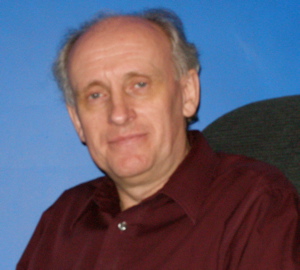Recently, my primary research activities have been with the BLAST Experiment at the MIT-Bates Linear Accelerator Center situated about 20 miles north of Cambridge in Middleton, Massachusetts. BLAST was designed to study in a precise and systematic manner the spin-dependent electromagnetic interaction of nucleons and few-nucleon systems. The experiment was very successful but stopped running in 2005 and we are now finalising the analyses and preparing numerous papers on the physics from BLAST.
We were disappointed to stop the BLAST running at the MIT-Bates Laboratory as there were still a number of studies which could have been carried out. Unfortunately DOE funding was reduced and that necessitated curtailing the running. However, we still hope to continue the BLAST program possibly at another accelerator.
Initially we investigated moving the BLAST detector to the ELSA storage ring at the University of Bonn but the physical limitations made this unrealistic. We are now exploring the possibility of moving the detector to the DORIS storage ring at DESY which has a lot of advantages.
The DORIS storage ring was originally built as an electron-positron collider to study the upsillon resonance. One of the important discoveries at DORIS was CP violation in the b system observed by studying B-Bbar mixing. Later Doris was converted into a synchrotron light source for the numerous experiments of the HASYLAB facility at DESY. In the near future synchrotron light studies will move to a renovated facility which will use the PETRA ring at DESY. What happens on DORIS remains to be decided.
Doris would be an ideal venue for the BLAST program. First, it
is a large facility with plenty of space and facilities to
accommodate the BLAST detector. Second, it can reach beam
energies up to 4.5 GeV which, while a bit high for the BLAST
toroidal magnetic field to be effective as a momentum analyser,
would allow measurements to be made at hgher
One of the interesting results to come from JLAB recently was the measurement of the proton form factor ratio. The JLAB experiment measured this ratio using a polarisation transfer technique and found that, above 1 GeV, the ratio dropped quickly. This was in contradiction to the ratio being approximately equal to 1 as measured by the tradition unpolarised measurements using Rosenbluth separation. The discrepancy may be explained by the effect of two photon contributions to the scattering cross section. In unpolarised measurements multi-photon exchange is effectively averaged over. But in polarisation transfer the single photon exchange dominates. The magnitude of the two photon contributions can be directly measured by measuring the difference between the scattering cross section of electrons versus positrons from hydrogen. In one photon exchange there is no difference in cross section (at least below the weak vector boson threshold). But if multi-photon processes are important then there are interference terms which change sign between electrons and positrons. Measuring the magnitude of this interference is a measure of the importance of multi-photon processes and, if observed, could explain the discrepancy in the form factor ratio measurements. We are currently developing a proposal, the OLYMPUS Experiment, to measure this ratio using the BLAST detector at DORIS.
Of course the plans for DORIS are not decided yet. It may continue to run as a synchrotron radiation facility which would not necessarily exclude BLAST running simmultaneously but it may also be closed down. We are hoping to present our case for BLAST at DESY soon.
In the mean time I am also involved in a tracking upgrade to the STAR detector at RHIC. My interest here is with the RHIC spin program studying polarised proton scattering from polarised protons with a view to exploring the spin structure of the proton. The tracking upgrade proposes the construction of new forward tracking detectors using GEM technology together with more standard but expensive silicon strip detectors. To this end a laboratory has been established at MIT to work with GEM detectors and several protypes have been made with encouraging reults. Also a number of Monte Carlo studies have been made to optimise the configuration for possible future detectors.
Another proposal being pursured is to utilise the same GEM technology in an experiment in Japan at J-PARC. This would be a direct measure of time reversal violation. Since quantum field theory requires CPT to be conserved and since CP has been ovserved to be violated it follows that time revesal must also be violated but this has not been directly measured. The proposed upgrade to the experiment in Japan would measure T violation or at least set limits on the process.
Finally, the next big project for studying the boundary between high energy and nuclear physics and the important region where confinement ocurrs will be the future Electron - Ion Collider. Two facilities are preparing proposals: one at BNL called eRHIC would add an electron accelerator to collide electrons and positrons with the existing proton and ion beams available at RHIC, and one at JLAB called ELIC. Both proposals have benefits and would open up an interesting region of spin-dependent measurements on the nucleon structure.
